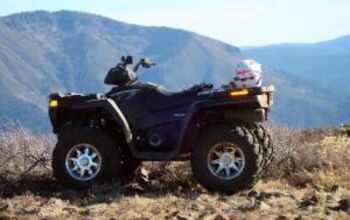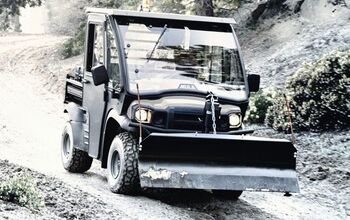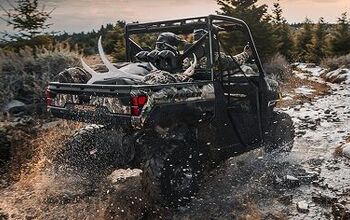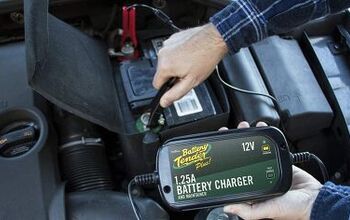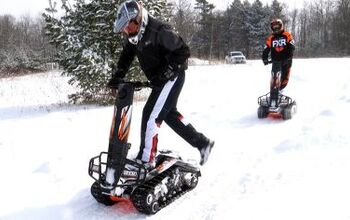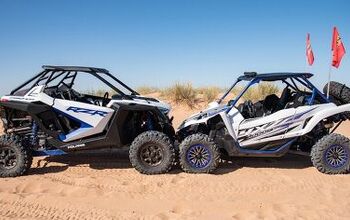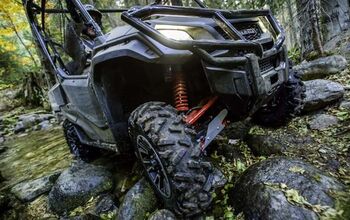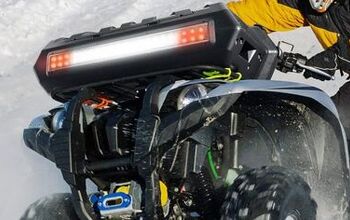Can-Am Apache Backcountry and Backcountry LT Test Ride + Video
One of the most interesting seasons of the year for an avid off-road adventurer is winter. The cooler temperatures make riding full days on the trail a little less stressful and along with the cooler weather comes a better performing and overall happier machine. But if you ride in the extreme northern climates, the wintery precipitation might hold you back from getting to those ultimate lookouts or destinations for that incredible selfie. A blustery winter snow can pose several problems, but when riding in the back country there is nothing to really compare to the views and wild woods if you can get there. Enter the Can-Am Apache Back Country and Back Country LT track systems.
These bolt on kits not only open up a world of exploration for the hardcore deep powder adventurer, but they are built to give floatation an extra definition in general. Having spent a full day riding in and on many Can-Am machines from the incredible Maverick X3, the Defender, the Maverick Sport Max and even a Can-Am Outlander all equipped to handle the snow, it was clear that the product was a definite consideration when living where snow is deeper than the holler. If you’re not a southerner and are wondering what a “Holler” is, this should explain it.
This is not the kind of winter our writer is accustomed to.
The very first thing I realized as a “deep powder virgin” when stepping out of the lodge at Canada’s Lac des Bouleaux was that I was not in Georgia anymore and the S@&% just got real. The winter up here is no joke and I would say the state of Georgia would close if we experienced anything remotely close to this kind of winter precipitation. Our location was about 2.5hrs north west of Quebec City and when you say the words “back country” this is where Webster’s dictionary began looking for that term’s definition. The city streets were lined with pop-up garage canopies for folks to park their cars in because I think they couldn’t find their houses if not for the occasional hole in the snow (AKA the street), with a faint street sign hanging from the trees.
But in all seriousness, it couldn’t have been a better location, just northeast of Saint Urbaine, where the Can-Am PAC (Parts Accessories Clothing) team decided to introduce journalists to its latest Apache brand snow tracks. The Can-Am Apache brand tracks have been on the market for many years as an all-season track kit. Having the latest in Can-Am’s technology at our disposal, we had a chance to experience the new Can-Am Apache Back Country and Back Country LT track systems.
The Can-Am Apache Back Country kits feature a 2-inch lug on a 3-inch pitch construction to increase the versatility and to give uncompromised traction. This design also adds serious flotation as we would soon experience for ourselves. Departing from the normal all-season track design, the special features are very unique to this new set of tracks and at the core is the slider system.
The Apache Back Country uses an aluminum rail or slider for more contact patch. There is actually 29% more contact patch according to Can-Am. This allows the track to stay a bit looser and pliable for vastly improved traction and is cooled or lubricated by the snow it runs through. According to Can-Am this is actually the same technologically advanced track that you will find on the Ski-Doo Summit snowmobile. If you are familiar with the Summit’s engineering, then you already know it performs very well and now you can have that same track on every corner of your ATV or UTV. A bonus feature is the extra 7 inches of ground clearance added to the machines running the Can-Am Apache Back Country LT tracks.
Our first ride in the morning was on the Can-Am Outlander 1000R with the all-season tracks. These tracks are familiar to us as we actually tested a set on our own Outlander 800 back in 2009 in Georgia. These tracks work well an “all-seasons or terrains” and actually seemed to work well even in the deep powder. They definitely made turning a little easier and the rear of the machine seemed to slip around well when navigating corners. All of this would change, however, once we reached a point where the snow was being measured in feet instead of inches.
Once we reached the first stop on our tour of the mountainside, we were able to get on the Outlander 850 using the Can-Am Apache Back-Country track system. Surprisingly, these were quite possibly the most fun machines with tracks. Being on an ATV in the snow is something really refreshing as it just feels like a freedom not experienced with traditional trail riding in the south. Standing on the pegs of the ATV looking way out into the snow-covered mountains in front of you is simply amazing. And even though the temperatures did seem to be bone chilling in the morning, it was still very fun. The Outlander ATV with its DPS did float well on the snow and the powerful Rotax mill gave us enough grunt to easily keep up with the rest of the crew. The track pulled the ATV and its newly found ground clearance over anything that was covered in the snow. Well, almost anything. Finding rough cut tree stumps in a field of completely white, snow-covered flatness was easier for one of us. Yeah, that’s me. But a little digging and it was right back to the trails.
From the ATVs to the SXS, I jumped at the chance to get inside the Can-Am Maverick X3 X rs that was donned with the Can-Am Apache Back Country LT tracks. The “LT” refers to the Long track and man did they look good on the Maverick. The Beast mode button had been pressed with this machine and I think even the elusive Yeti would turn and run from it.
So here is where our adventure gets even more impressive as we started to think about the details of what we were doing. The vehicle weighs in at an incredible mass, but with these tracks it would just float along as if we were in maybe a foot or two of snow. It wasn’t until I stepped out of the rig and sank up to my waist in the white stuff that I realized what miracle had taken place. I could not walk in the snow because of how deep it was, and this big machine stood on top like a warrior. Now turning corners or simply turning around takes a bit more room and snow will cover the windshield, blocking suitable viewing space, but man it just works.
Now I did mention steering and that is worth a deeper look as well. Can-Am developed a plug and play interface for the specific use of tracks on the Maverick and Defender models, which gives a bit more assist and recalibrates a few things to make sure you get the best possible ride out of the product. One additional feature that I find extremely important now for this type of riding is the fact that both the Defender and the Maverick Sport Max had accessory heat installed. The Maverick X3’s did have heated seats, which helped, but there is no comparison to the actual heater option.
Overall it was a great day of riding in some REAL snow! These guys who do this kind of riding every winter really know how to read the lay of the land and I can say that if I were to live in this zip code (or postal code, as our Canadian friends call it), I would surely want something like the Can-Am Maverick or Outlander with the Can-Am Apache Back Country tracks to keep me moving in the winter time! Not to mention a bit warmer wardrobe as the cold is relentless for a southerner.
Whether he is in Mexico covering the Baja 1000, building ATVs for local racers, or out enjoying the trails, Rick’s passion shows in his stories. Learning to wrench his own machines from his grandfather, Rick also has an undying appreciation for the mechanics of off-road vehicles. Do not let the dirt and mud fool you, though, as Rick also has a deep love for street cars.
More by Rick Sosebee



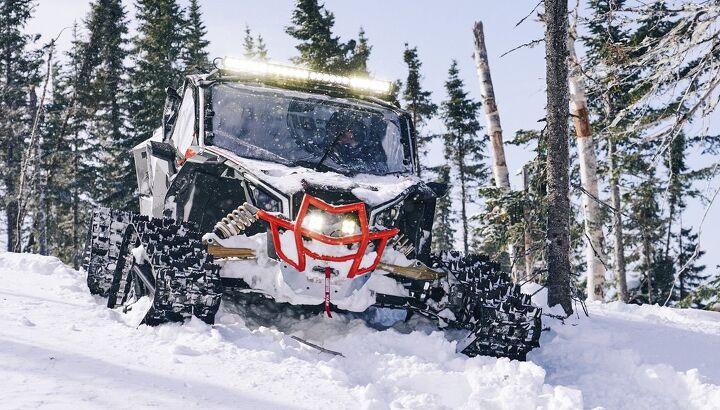









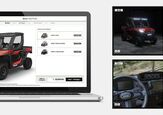




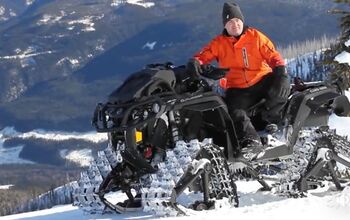
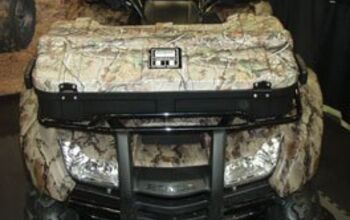

![Don't Try This at Home: Muddy Crash [video]](https://cdn-fastly.atv.com/media/2022/10/24/8744120/don-t-try-this-at-home-muddy-crash-video.jpg?size=350x220)



